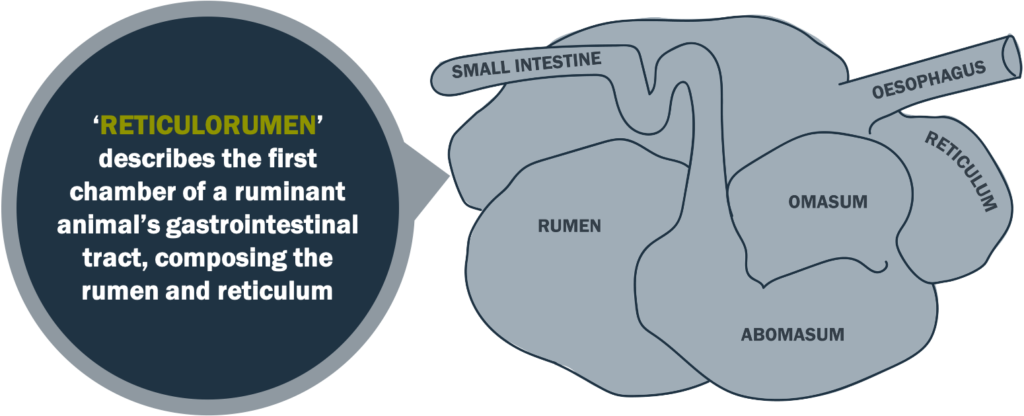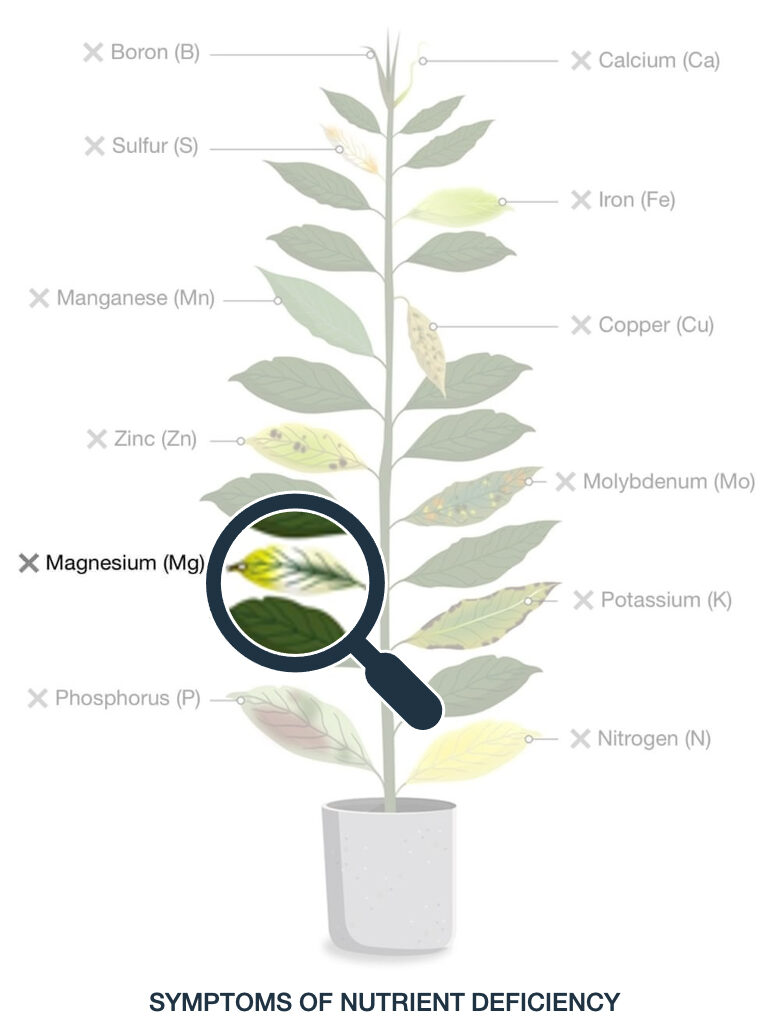- Magnesium (Mg) is a silvery white and very light metallic element found abundantly in nature; it occurs naturally, but only in combination with other elements, such as carbon, calcium, and oxygen, and is a crucial macro mineral.
- Magnesium was discovered in 1808 by Cornish chemist, Sir Humphrey Davy.
- Termed ‘magnesium’, the name describes the Greek region of Magnesia where compounds of the element naturally occur.
Magnesium is Essential for Animals
Closely associated with calcium and phosphorus, magnesium is a critical macro mineral essential to most biochemical body processes. While magnesium exists in all cells, 60-70% predominantly resides in the skeleton and the remainder throughout soft tissues and fluids. Magnesium enables countless animal body functions and is crucial for sustaining life.
Key functions requiring magnesium include:
- Bone and teeth integrity
- Enzyme activation
- Neuromuscular activity
- Carbohydrate, protein and fat metabolism
- Involved in the body’s hormonal activity
- Essential for cell respiration
- Needed for normal insulin sensitivity (Ewing 2007)
Among monogastric animals or animals comprising only one stomach, like horses, magnesium absorption occurs primarily in the small intestine and also in the large intestine. In ruminant animals, such as cattle, magnesium absorption occurs primarily in the reticulorumen.

McDonald (2011) recognised ruminant animals absorbed magnesium at a lower rate than monogastric animals, finding absorption efficiency was impacted by potassium as it inhibited two active transport systems existing in the rumen wall that are capable of carrying magnesium against the electrochemical gradient. Comparatively, Ewing (2007) suggests magnesium absorption is reduced by high levels of calcium, phosphorus, potassium, irons, fats, oxalic acid and phytate. It is also possible for calcium to run interference on magnesium absorption where both minerals compete for the same absorption sites.
What Does Magnesium Deficiency Look Like in Animals?
Animals that do not receive or absorb enough magnesium to meet requirements can experience the following symptoms:
- Hyper-irritability and tetany
- Neurological signs (staggering nervousness, muscle twitching teeth grinding, excessive salivation, extreme excitement)
- Hypomagnesaemia or Grass Tetany which occurs when blood magnesium levels fall below critical levels (<1.1mg/100ml)
- Retarded growth
- Reduced feed intake and anorexia
- Muscular incoordination
- Convulsions
- Excessive calcification of bone and fat tissue
Livestock Benefits Associated with Magnesium
Supplementing livestock with magnesium offers many benefits (Ewing 2007), including:
- Improved weight gains as magnesium supports growth, repair of body tissues and bone development
- Relaxed nerve impulses
- Increased potential for improving meat quality if fed pre-slaughter
- Increased rumen pH and improved milk yield and butter fats
- Improved marbling score in cattle fed fat supplement diets
- Involved in peptidases in protein digestion
- Vitamin D activation
- Relaxed nerve impulses
Magnesium is Essential for Soil and Plants
Magnesium is an essential plant nutrient involved in many physiological and biochemical processes. It is essential for plant growth, assisting development and defence mechanisms in abiotic situations (Senbayram 2015).
Magnesium can be found in most Australian subsoils, but magnesium availability can be disrupted by agricultural systems and management practices, such as crop type, cropping intensity and rotation, and fertilisation applications, causing significant variations depending on soil type. Soils containing high levels of magnesium are primarily alkaline (Glendinning 1990), but magnesium influences many factors, including soil structure stability, nutrient availability, soil pH, reaction to fertilisers, and other factors helping plant growth through soil improvement (Hazelton 2007). Magnesium also influences Cation Exchange Capacity (CEC), a measurement of soil fertility determined by soil capacity to supply calcium, magnesium, and potassium. Magnesium is crucial to plant health as it forms the central atom of chlorophyll, the molecule or ‘green pigment’ in plants that is essential to photosynthesis (Senbayram 2015), and promotes vegetative and generative plant growth.
What Does Magnesium Deficiency Look Like in Plants?
Deficiency symptoms appear first on the older leaves and systematically progresses towardsyounger leaves. Glendinning (1990) identifies several symptoms of magnesium deficiency in plants, as follows:
- Interveinal areas of the plant become mottled before turning yellow and dying, while the leaf veins remain green
- Leaves become abnormally thin
- Older leaves are generally more prone to symptoms of magnesium deficiency
- In cotton, leaves develop a purplish-red colour between green veins
Even a slight magnesium deficiency may affect biomass formation and plant susceptibility to environmental stresses by diminishing several biochemical and physiological processes (Senbayram 2015). Magnesium deficiency is more likely to occur in soils that are coarse in texture and located in humid regions. Generally on the light, sandy acid soils of higher rainfall areas, these soils are usually deficient in calcium and occur mainly in coastal and some tableland areas in Australia.

AgSolutions Can Help
Magnesium supplementation assists livestock, soil, and plant life health, but it is important to get the balance right. Identifying magnesium levels or underlying risk of magnesium deficiency in livestock and soil is a service we provide. Simply contact our team on 1800 81 57 57 or reach out to an AgSolutions Field Advisor in your region and ask how our services can assist your operation.
Services include:
- Soil Testing – Identify mineral levels and potential deficiencies
- Pasture Management Programs – Develop strategies for achieving long-term productivity goals
- Feed Testing – Identify mineral levels and potential deficiencies
- Ration Formulation – Develop feed rations for balancing mineral intake and rectifying nutritional shortfalls
We also offer an extensive range of products for assisting livestock health and soil fertility. Our range of NatraMin Soil Conditioner and Mineral Fertilisers restore broad spectrum minerals to improve the nutritional, biological, and structural aspects of soil fertility. Our range of MegaMin Livestock Supplements provide essential macro and trace minerals that promote productivity by assisting livestock health. MegaMin Blends comprising extra magnesium include:
- MegaMin Extra Magnesium – standard, sweet and super sweet
- MegaMin BovaMag – standard, sweet and super sweet
- MegaMin Lush Legume Lick
- MegaMin Pre/Post Lambing
- MegaMin Pre/Post Lambing + Bovatec
- MegaMin Bone Defender – for horses
Ask about our products and services at your preferred store or contact our Head Office on 1800 81 57 57. You can also contact our Field Advisors and find the closest one to you by following this link: https://agsolutions.com.au/our-company/our-team/field-advisors
